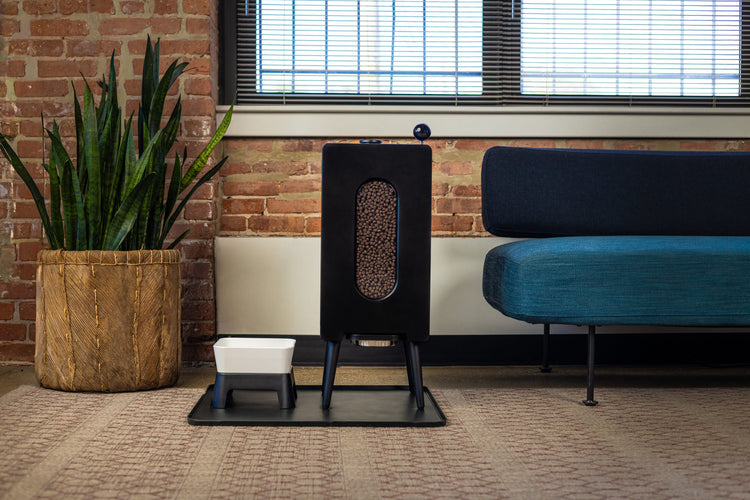Homemade Food for Dogs with Diabetes: Nourishing Your Furry Friend with Care and Control
- Houndsy
Table of Contents
- Introduction
- Understanding Diabetes in Dogs: Why Diet Matters
- Key Nutritional Components of Homemade Food for Diabetic Dogs
- Sample Homemade Food Recipe for Dogs with Diabetes
- Adjusting Portions and Feeding Schedules for Consistency
- Overcoming Challenges: Transitioning and Monitoring
- Benefits Beyond Nutrition: Enhancing the Feeding Experience
- Final Thoughts: Empowering Your Journey with Homemade Diabetic Dog Food
- Frequently Asked Questions
Introduction
Have you ever found yourself painstakingly reading dog food labels, only to question whether your diabetic dog is actually receiving the right nutrients to keep their blood sugar steady? Managing diabetes in dogs affects approximately 1 in 300 pups, making it a common—but seriously challenging—health condition for pet parents. With diabetes, consistent and balanced nutrition is not just a preference; it’s a lifeline.
In the quest to provide the best care, many dog owners are turning to homemade food for dogs with diabetes. Why? Because it offers full transparency and control over every ingredient, helping you fine-tune meals that support your dog’s unique metabolism, energy needs, and overall well-being. But what does crafting homemade diabetic-friendly meals really entail? How can you ensure it’s nutritionally complete, safe, and effective?
In this post, we’ll walk you through the fundamentals of diabetes management through diet, explore the critical components of homemade diabetic dog food, provide practical recipe ideas, and share tips to monitor and adjust your dog’s diet effectively. Along the way, we’ll integrate insights from veterinary nutrition research and real-life experiences, all while weaving in how thoughtful product design — like the Houndsy Kibble Dispenser — can elevate and simplify your dog’s feeding routine.
So, are you ready to take control of your dog’s diabetes through homemade nutrition while enhancing every meal with convenience and style? Let’s dive in.
Understanding Diabetes in Dogs: Why Diet Matters
Diabetes mellitus in dogs occurs when the body either doesn’t produce enough insulin or can’t properly use the insulin it produces. Insulin regulates blood sugar (glucose), the primary energy source for cells. When insulin is deficient or ineffective, glucose accumulates dangerously in the bloodstream — a condition called hyperglycemia.
Unmanaged diabetes can cause complications such as cataracts, kidney failure, urinary tract infections, and nerve damage. For this reason, managing blood glucose levels consistently is paramount. While medications like insulin injections form part of treatment, diet plays an equally critical role.
Why is diet so important? Because the foods your dog eats directly influence their blood sugar levels. High-sugar and high-refined carbohydrate foods can cause spikes and crashes in glucose, making diabetes more difficult to control. Conversely, a carefully formulated diet can promote stable blood sugar, support healthy body weight, and maintain energy and muscle mass.
The Role of Diet in Canine Diabetes Management:
- Control blood sugar fluctuations: Avoid rapid rises in glucose.
- Support insulin efficacy: Foods that promote insulin sensitivity.
- Maintain healthy weight: Prevent obesity, which worsens diabetes.
- Meet nutritional needs: Provide balanced macro- and micronutrients.
- Enhance overall well-being: Promote digestive health and vitality.
With these goals, many pet parents find that homemade food offers the best avenue to customize meals to these needs, avoiding additives, sugars, and fillers common in commercial diets.
Key Nutritional Components of Homemade Food for Diabetic Dogs
Creating homemade food for diabetic dogs requires balancing several nutritional factors to stabilize blood glucose and maintain overall health. Here’s a detailed breakdown of what to include:
1. High-Quality Protein
Protein is essential for maintaining muscle mass and overall body function. For diabetic dogs, lean protein helps regulate blood sugar by providing energy without excess carbohydrates that can spike glucose.
Good protein options:
- Skinless chicken breast
- Turkey
- Lean beef
- Fish (like salmon, rich in omega-3 fatty acids)
- Eggs (in moderation)
Protein also supports satiety, helping your dog feel full and reducing begging or overeating tendencies.
2. Low Glycemic Index Carbohydrates
Carbohydrates have the most significant impact on blood sugar levels. Choosing low glycemic carbs that release glucose slowly helps avoid sudden spikes.
Ideal carbohydrates include:
- Sweet potatoes (in moderation)
- Pumpkin
- Lentils and legumes (some dogs tolerate well)
- Barley and brown rice (small quantities)
Avoid high glycemic carbs such as white potatoes, corn, peas, and most fruits with high sugar content.
3. Fiber-Rich Vegetables
Fiber slows digestion and glucose absorption, which smooths out blood sugar fluctuations and supports digestive health.
Recommended vegetables for fiber:
- Green beans (finely chopped for digestibility)
- Broccoli
- Spinach
- Carrots (used sparingly)
Fiber also aids in weight management by promoting fullness.
4. Healthy Fats
Fats provide essential fatty acids that promote skin and coat health and support energy balance. Fat does not raise blood sugar directly but should be managed carefully to avoid excess weight.
Healthy fat sources include:
- Fish oil (rich in omega-3)
- Flaxseed oil
- Coconut oil (in moderation)
Avoid corn oil and highly processed vegetable oils, which may contribute to inflammation.
5. Essential Supplements
Homemade diets must meet vitamin and mineral needs. Calcium and phosphorus are crucial for bone health, often supplemented using dicalcium phosphate. Omega-3 fatty acids help reduce inflammation.
Always consult your veterinarian to tailor supplements to your dog’s needs and ensure nutritional completeness.
Sample Homemade Food Recipe for Dogs with Diabetes
Here is a practical recipe aligned with these principles to get started:
Ingredients:
- 2 lbs skinless, boneless chicken breast (cooked and diced)
- 1 cup finely chopped green beans
- 1 cup cooked pumpkin puree
- ½ cup brown rice (cooked)
- 1 tablespoon fish oil
- 1 teaspoon dicalcium phosphate (or as per vet’s advice)
Preparation:
- Cook chicken thoroughly, avoiding seasoning.
- Steam green beans until soft, then finely chop.
- Cook brown rice until tender.
- Mix chicken, green beans, pumpkin, and rice in a large bowl.
- Add fish oil and calcium supplement; stir thoroughly.
- Serve room temperature in appropriate portions based on your dog’s size and vet’s recommendations.
- Store leftovers in an airtight container in the refrigerator for up to 3 days or freeze in portions for up to 3 months.
This balanced blend provides lean protein, fiber-rich veggies, low glycemic carbs, and healthy fats—a wholesome meal to support blood sugar control.
Adjusting Portions and Feeding Schedules for Consistency
One of the most overlooked but vital aspects of diabetes management is consistent feeding routines. Irregular feeding or overeating can cause erratic blood glucose swings, complicating insulin therapy.
Tips to maintain consistency:
-
Feed at the same times daily, ideally split into two or three small meals.
-
Use precise measurements for portion control—avoid guesswork.
-
Consider employing a high-quality portion control tool to prevent overfeeding or underfeeding. The Houndsy Kibble Dispenser, with its precise portion control crank and ergonomic design, can elevate your feeding routine by providing consistent, accurate meal servings without bending or mess. It combines mid-century modern aesthetics with practical function, making daily feeding a safer, easier, and cleaner experience.
-
Keep a food diary to track what and when your dog eats alongside blood sugar readings.
Overcoming Challenges: Transitioning and Monitoring
Switching to homemade food can present challenges such as digestive upset, picky eating, or concerns about nutritional adequacy. Consider the following:
- Gradual Transition: Slowly blend homemade food with existing diet over 7–10 days to allow your dog's digestive system time to adjust.
- Watch for Side Effects: Diarrhea, excessive gas, or nausea may indicate intolerance or an unbalanced recipe. Consult your vet promptly.
- Picky Eaters: Add low-sugar flavor enhancers like low-sodium chicken broth, plain yogurt, or a sprinkle of low-fat cheese to entice appetite—without causing blood sugar swings.
- Regular Vet Consultations: Share your homemade recipes with your veterinarian or a canine nutritionist to verify nutrient balance and get individualized advice.
Monitoring blood glucose regularly and documenting results is crucial to identifying how your dog’s body responds to dietary changes.
Benefits Beyond Nutrition: Enhancing the Feeding Experience
At Houndsy, we understand that feeding your dog is more than just a meal—it’s a ritual of care and connection. That’s why we designed the Houndsy Kibble Dispenser to bring elegance, ease, and precision to mealtimes.
Why choose the Houndsy Kibble Dispenser for your diabetic dog?
- Perfect Portion Control: Guarantees consistent meal sizes to match dietary plans, reducing blood sugar volatility.
- Ergonomic Crank at Standing Height: Eliminates uncomfortable bending, making feeding quick and comfortable for you.
- Large Storage Capacity (25–30 lbs): Minimizes refills for busy households while keeping food fresh with BPA-free liners.
- Auto-locking Mechanism: Prevents accidental spills or overfeeding by pets or toddlers, keeping your kitchen neat and your dog safe.
- Mid-Century Modern Aesthetic: Blends seamlessly into modern home décor, transforming feeding from a chore into a beautiful daily practice.
By pairing thoughtful diet planning with a tool designed to simplify feeding, managing your dog's diabetes becomes not only easier but more enjoyable.
Final Thoughts: Empowering Your Journey with Homemade Diabetic Dog Food
Managing a diabetic dog’s diet through homemade food is a powerful way to take control over health, improve quality of life, and nurture your furry friend with the attention they deserve. Through understanding the condition, selecting balanced ingredients, monitoring closely, and committing to consistency, you can help your dog thrive despite their diagnosis.
Incorporating innovative tools like the Houndsy Kibble Dispenser complements busy lives by ensuring perfect portions and reducing the physical and mental load of feeding—helping you keep your dog’s meals both beautiful and precise.
Reflect for a moment: How could a balanced homemade diabetic diet combined with a well-designed feeder improve your dog's daily routine? Are you ready to embrace a feeding method that values both your dog’s health and your lifestyle ease?
Good nutrition is a cornerstone of diabetes management, and your love and care are the foundation. Let’s build on both.
Frequently Asked Questions
Q1: Can I feed my diabetic dog any fruits or vegetables?
A: Yes, but selectively. Opt for low-sugar veggies like green beans, spinach, and broccoli. Avoid high-sugar fruits or starchy vegetables such as corn and peas, which can spike blood sugar.
Q2: How often should I feed my diabetic dog?
A: Typically, two to three small meals spaced evenly throughout the day is ideal. Consistency helps maintain stable blood glucose levels.
Q3: Is homemade food safe and nutritionally complete for diabetic dogs?
A: Homemade food can be safe and balanced if recipes are formulated with veterinary oversight. Supplements are often necessary to meet all nutritional needs. Always consult your vet or a canine nutritionist.
Q4: Can I use commercial diabetic dog food instead of homemade meals?
A: Yes, there are many reputable commercial diabetic diets that are nutritionally complete. However, homemade food offers greater control and freshness if prepared properly.
Q5: How does the Houndsy Kibble Dispenser help in managing my diabetic dog's diet?
A: It ensures precise portion control at a comfortable height, reducing the chance of over or underfeeding and making meal preparation more efficient and mess-free. Consistent portions are critical for diabetic regulation.
Managing your diabetic dog’s nutrition may take some effort, but with the right knowledge, tools, and support, you can deliver meals that nourish both body and soul. Explore the Houndsy Kibble Dispenser today for a feeding experience designed to complement your dedication to your dog’s health.












